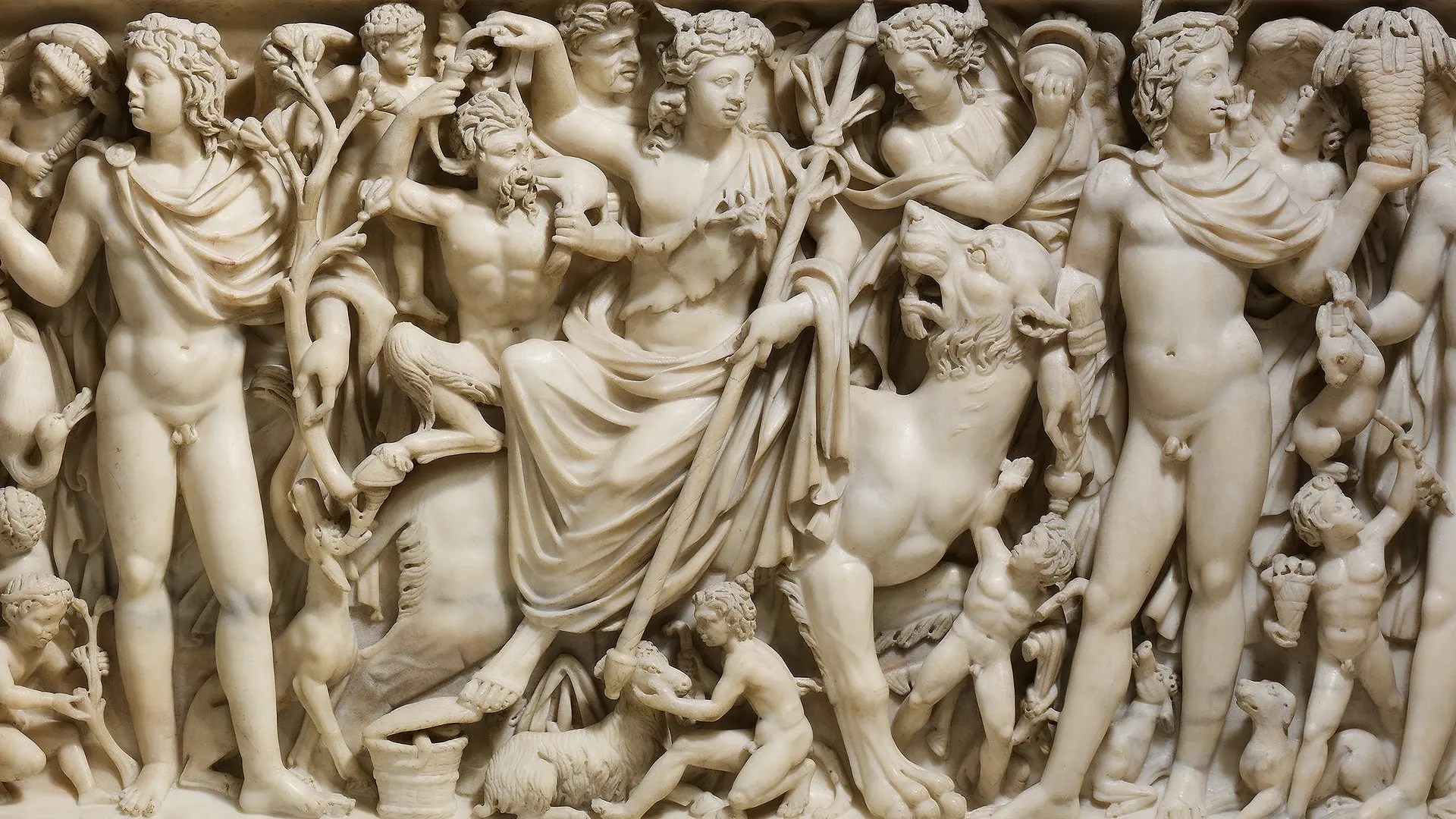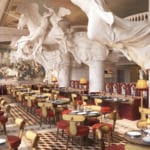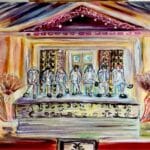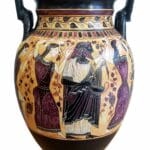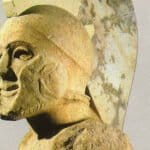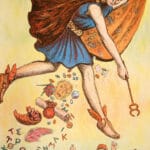Imagine wild parties fueled by wine, ecstatic dancing, and intense religious fervor. This is the image often conjured when we hear of the ancient Greek Bacchanalia. But were these gatherings simply drunken orgies, or was there a deeper meaning? This article delves into these mysterious celebrations, exploring their religious significance, social impact, and eventual suppression, revealing a story far more nuanced than mere wine and wild times.
Dionysus: God of Ecstasy and Chaos
At the heart of the Bacchanalia was Dionysus (Bacchus in Roman mythology), the god of wine, theatre, and untamed nature. Unlike the stoic Olympian gods, Dionysus, born of Zeus and a mortal woman, embodied rebellion and ecstatic release. His symbols—grapevines, ivy, and the thyrsus—speak to his intoxicating influence. How this translated into ritual, however, remains a fascinating area of study. [https://www.lolaapp.com/#what-happened-during-bacchanals]
Dionysian Festivals: A Spectrum of Celebration
The Bacchanalia weren’t a monolithic event; they encompassed a spectrum of celebrations. The Greater Dionysia in Athens was a massive, city-wide festival featuring theatrical performances, while smaller, more localized affairs like the Lesser Dionysia and the Anthesteria existed concurrently. Even rural celebrations differed, suggesting a flexible and adaptable cult. Were these variations simply practical adaptations, or did they reflect deeper, nuanced understandings of Dionysian worship? This question continues to intrigue scholars. [https://www.lolaapp.com/#what-happened-during-bacchanals]
The Maenads: Women at the Heart of the Ecstasy
Women played a pivotal role in the Bacchanalia, particularly the Maenads (or Bacchae), Dionysus’s female followers. Freed from societal constraints within the ritual context, they expressed unrestrained emotion through wild dances and ecstatic songs. Their uninhibited energy was both captivating and unsettling to outsiders. Was this powerful participation a rejection of traditional gender roles, a spiritual awakening, or a more complex interplay of both? This remains a subject of considerable debate among historians. [https://www.lolaapp.com/#what-happened-during-bacchanals]
A Sensory Overload: Music, Dance, and the Power of Wine
Bacchanalian rituals were a sensory extravaganza. Vivid processions, colorful costumes, captivating music, and potent symbolism filled the landscape. Wine served as a sacramental element, fostering a profound sense of communion with the divine. Animal sacrifices, rich in symbolic meaning, were also integral. Music and dance, potentially inducing altered states of consciousness, blurred the lines between human and divine realms. Precisely how these rituals achieved this remains a captivating area of ongoing research. [https://www.lolaapp.com/#what-happened-during-bacchanals]
Unveiling the Mysteries: Initiation and Transformation
Some Dionysian rites were shrouded in secrecy, known as the Bacchic Mysteries. These initiatory ceremonies promised personal transformation. The exact nature of these secret rites remains largely unknown, leaving us with many unanswered questions about the experiences of participants and the lasting impact on their lives. [https://www.lolaapp.com/#what-happened-during-bacchanals]
The Roman Response: Suppression and Societal Anxieties
The Romans, though often adopting elements of other cultures, had a more complex relationship with the Dionysian cult. Around 186 BC, the Roman Senate launched a harsh crackdown, completely suppressing the public celebrations. [https://www.lolaapp.com/#when-was-bacchanalia-banned] Livy’s accounts suggest accusations of immorality and conspiracies, pointing to anxieties surrounding the cult’s power and influence. [https://www.lolaapp.com/#when-was-bacchanalia-banned] Were these concerns justified, or were they a reflection of Roman cultural biases? This question continues to fuel scholarly debate. [https://www.lolaapp.com/#when-was-bacchanalia-banned]
Echoes in Art: Visual Representations of the Bacchanal
Ancient Greek pottery, sculptures, and other artwork often depict bacchanalian scenes. These visual representations provide invaluable insights into the rituals and their impact on society. The evolving depiction of Dionysus himself—sometimes a mature, powerful figure, other times youthful and wild—suggests shifting cultural attitudes toward the god and his cult.
Modern Interpretations: A Continuing Debate
Our understanding of the ancient Greek Bacchanalia is constantly evolving. Different perspectives exist on their significance, and new discoveries might further change our interpretations. Some experts believe the religious aspect was paramount, while others emphasize the social function. It’s also likely that the events were complex and multifaceted, encompassing both religious and social dimensions. The ongoing research reflects the enduring fascination with these celebrations and their impact on ancient Greek and Roman societies.
Was it the Last Supper or a Greek Bacchanal? A Controversial Olympic Moment
The opening ceremony of the Paris 2024 Olympics featured a scene that ignited a significant debate. Many viewers saw parallels between the scene and Leonardo da Vinci’s “Last Supper,” leading to accusations of religious insensitivity. Others interpreted the scene as a representation of a Greek bacchanal, highlighting the celebratory, even ecstatic, aspects of the Dionysian cult. [https://www.lolaapp.com/#was-it-the-last-supper-or-a-greek-bacchanal] This controversy underscores the powerful interplay between artistic expression, religious beliefs, and public perception. The ambiguity of the scene itself fueled the debate, demonstrating how interpretations vary based on individual background and beliefs. [https://www.lolaapp.com/#was-it-the-last-supper-or-a-greek-bacchanal] Further research might potentially reveal the artistic intent behind the controversial scene. The lack of a clear statement from the Olympic committee likely contributed to the amplification of the controversy.
What Happened During Bacchanals? [what-happened-during-bacchanals]
The Bacchanalia were not single events but a range of celebrations varying across time and location. While alcohol played a significant role, these were not merely drunken orgies. They involved passionate dances, powerful chanting, symbolic sacrifices, and the wearing of masks and costumes. There’s evidence suggesting that the events fostered a sense of community, while simultaneously challenging social hierarchies. While the details remain debated, the Bacchanalia provide a fascinating glimpse into ancient life and religious practices. The Roman suppression of the Bacchanalia in 186 BC serves as a stark reminder of how religious practices could be perceived as threats to political and social stability.
When Was Bacchanalia Banned? [when-was-bacchanalia-banned]
The Roman Senate’s ban on the Bacchanalia in 186 BCE stemmed from a confluence of factors, including anxieties about social disorder, moral decay, and potential threats to Roman authority. The secretive nature of the rituals contributed to these suspicions, raising concerns about subversive activities. The Senatus Consultum de Bacchanalibus imposed severe penalties, underscoring the seriousness with which the Senate viewed the perceived threat. While the ban likely curtailed public celebrations, it probably didn’t completely eradicate the practice, with underground gatherings possibly continuing. The event remains a significant historical marker, illustrating the complex interplay between religious practices, societal anxieties, and political control in the ancient world.
- China II Review: Delicious Food & Speedy Service - April 17, 2025
- Understand Virginia’s Flag: History & Debate - April 17, 2025
- Explore Long Island’s Map: Unique Regions & Insights - April 17, 2025
